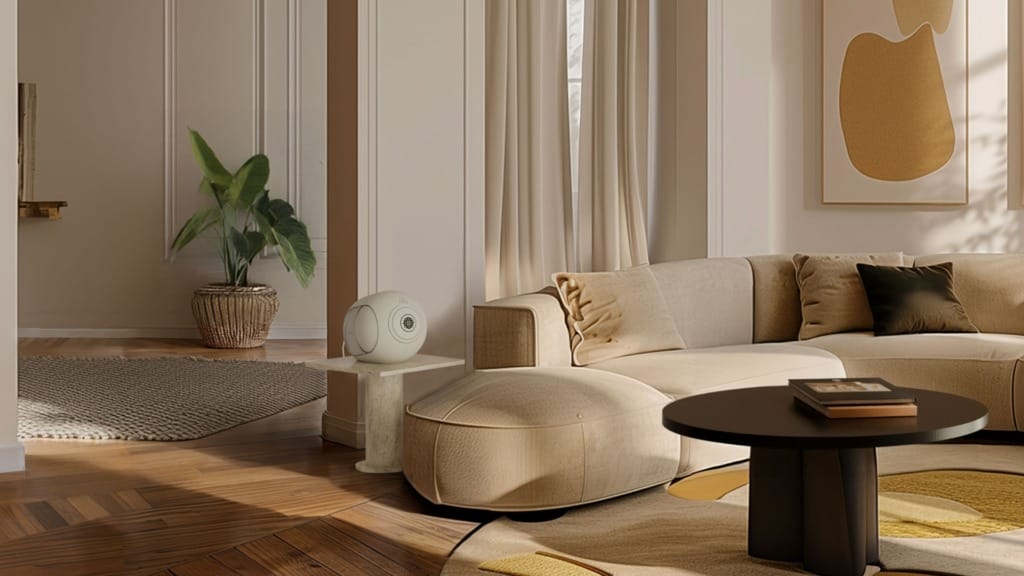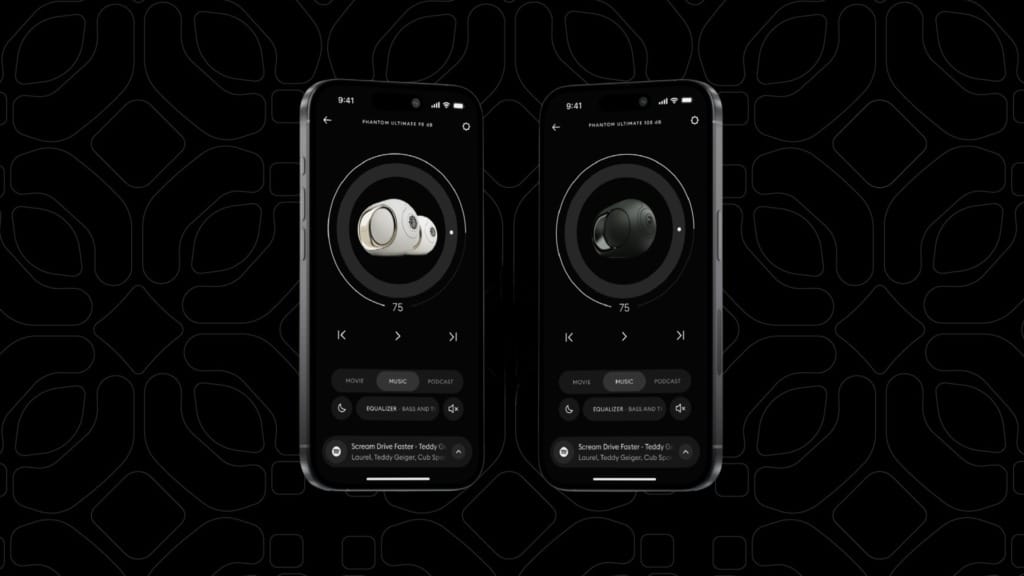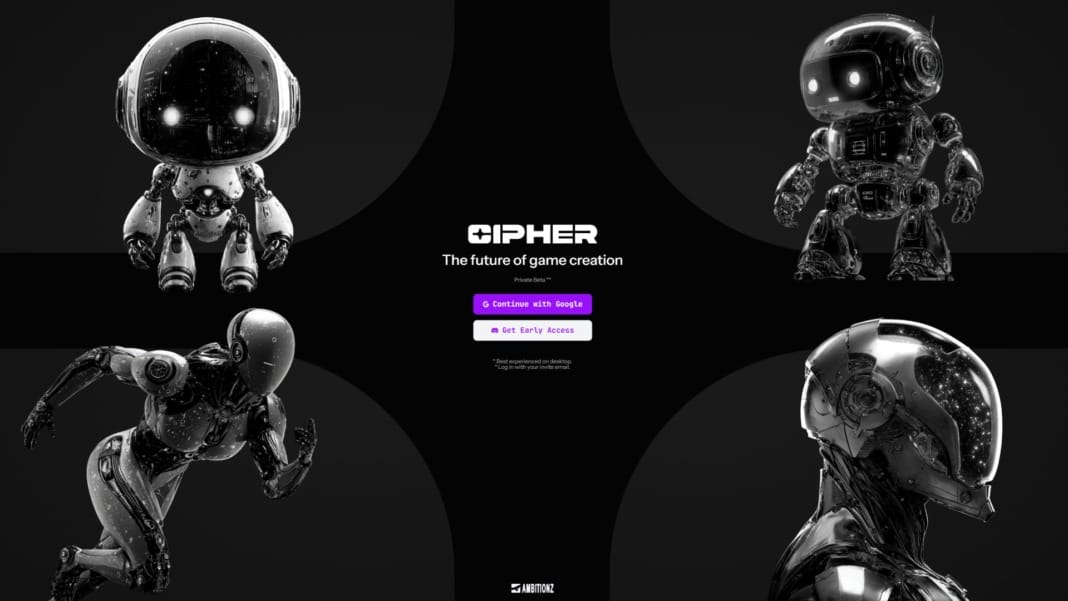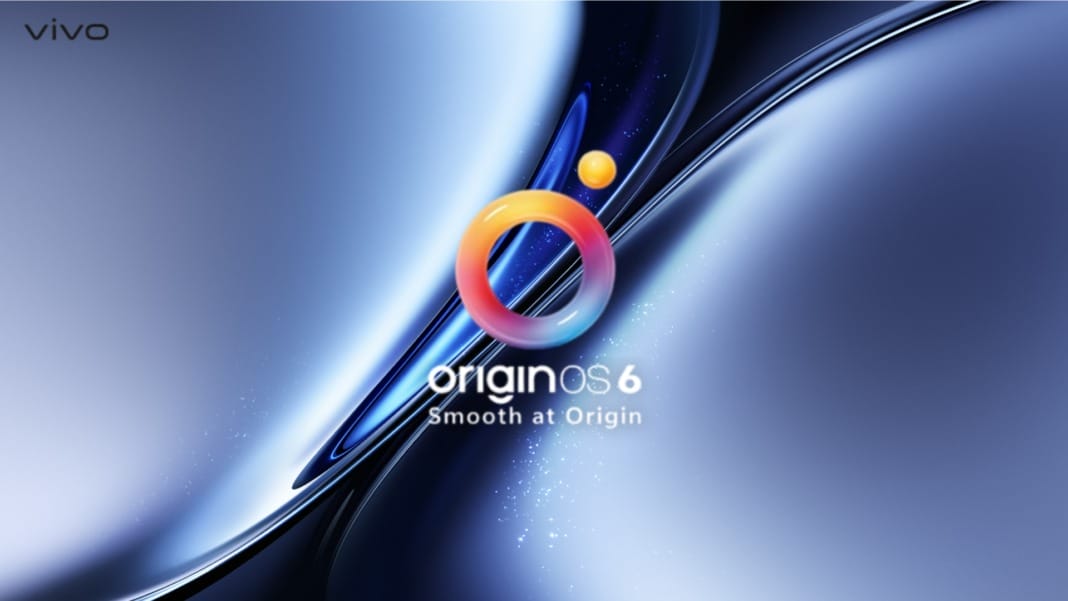When Devialet launched the original Phantom in 2015, it marked a pivotal shift in audio. Before that, high-end sound was split between two extremes. Traditional hi-fi systems offered exceptional performance but were bulky, complex, and difficult to integrate into modern spaces. Portable wireless speakers were convenient but compromised heavily on fidelity, often failing to capture the nuance and emotion of live music. Phantom changed that, delivering the power and purity of a reference-grade system in a fraction of the size, weight, and price, all packaged in an elegant, fully integrated form.
That breakthrough came from four years of research and 88 patents. It introduced several innovations: ADH hybrid amplification combined analogue warmth with digital efficiency, SAM (Speaker Active Matching) optimised performance in real time, HBI (Heart Bass Implosion) created bass pressure once thought impossible in a compact enclosure, and ACE (Acoustic Cospherical Engine) shaped Phantom’s distinctive form for optimal sound radiation. Together, these set a new benchmark for wireless high-end audio.
A decade later, the 2025 Devialet Phantom Ultimate relaunch — described by Devialet as the “Evolution of the Revolution” — arrives in a different landscape. Compact systems now rival floorstanding hi-fi, software-defined products are reshaping expectations, and luxury buyers demand longevity, adaptability, and sustainability. The Devialet Phantom Ultimate extends the original’s foundations with an expanded frequency range, reduced distortion, new listening modes, and a more powerful platform for future upgrades.
Yet the Devialet Phantom Ultimate is more than a new product. It is a statement about where audio is heading, a future shaped by innovation, software intelligence, sustainability, and emotional connection.
Rethinking the balance between form and function
Designing a compact speaker that delivers reference-level sound without distortion or overheating is one of audio engineering’s toughest challenges. The smaller the form factor, the harder it becomes to overcome thermal and acoustic limits. Meeting these challenges requires a fresh approach to design and manufacturing.

“After a while, ‘industry standards’ often persist by default, even when science and technology have moved forward,” says Jean-Loup Afresne, Chief Product & Technology Officer at Devialet. Before Phantom, most active speakers were conventional components in a shared box. Devialet broke that model by designing Phantom as an integrated system, optimising every part to work together. This enabled SAM, which constantly adjusts low-frequency performance, and ADH, which unites analogue and digital amplification in a single chip.
Pursuing this approach meant taking unusual steps. Devialet built its own speaker manufacturing facilities to produce components unavailable elsewhere and designed its own ASIC (Application-Specific Integrated Circuit) to miniaturise amplification technology without sacrificing fidelity. It also collaborated with industries such as automotive engineering to solve thermal and mechanical issues. These choices gave Devialet more control and the ability to push compact design further than competitors.
The Devialet Phantom Ultimate reflects this philosophy. The 108 dB model’s woofers now show their membranes without a dust cap, but achieving that required a complete re-engineering of the assembly. The tweeter grille was redesigned over six months of testing to balance acoustic precision with aesthetics, while driver updates reduce resonance and distortion. Each detail shapes performance as much as appearance.

“Ultimately, more than just a beautiful object, the Devialet Phantom Ultimate is a visual and sonic signature where every detail has been sculpted to transcend the listening experience,” Afresne says.
Thermal management remains a frontier. Compact speakers produce heat that affects performance and lifespan. Devialet responded with a new energy-efficient power supply, though Afresne acknowledges more can be done. “The future of high-fidelity sound must be sustainable without compromising its power and purity,” he notes.
This trade-off between form, performance, and physical limits is familiar across technology. Smartphones juggle slim designs with battery life, while electric vehicles balance weight, range, and safety. The Devialet Phantom Ultimate illustrates how progress comes when design and engineering evolve together.
Innovation as a measure of leadership
Sound quality alone no longer defines leadership in high-end audio. What separates brands is the scope of their innovation. Devialet’s strength lies in spanning multiple disciplines while protecting advances through intellectual property. Its 250-plus patents cover acoustics, signal processing, mechanics, and manufacturing, reflecting two decades of research and development.
“This patent portfolio constitutes a technological ecosystem that is unique in the world,” says Afresne. “It ranges from our signature ADH amplification technology, which is nearly 20 years old, to our innovations in acoustics like HBI for the physical impact of bass, and in signal processing with SAM for perfect control of the drivers.”

The Devialet Phantom Ultimate 108 dB model introduces four more patents, covering redesigned woofers for more precise bass, a midrange driver tuned to eliminate resonance, and a tweeter that balances finesse with robustness. These are fundamental improvements at the heart of the product.
Intellectual property is also strategic. “Another key point about our IP protection is the way we intertwine design, technology, and product architecture,” Afresne explains. “This ensures that the only way to achieve the same level of compactness and performance is to make an exact copy of our product, something we believe no competitor would risk.”

Here, Devialet diverges from much of the industry. Many audio brands focus narrowly on DSP, software, or acoustics. This siloed approach limits their ability to optimise the whole product. Devialet integrates microelectronics, speaker manufacturing, digital signal processing, and design to create systems that are harder to replicate and deliver more cohesive performance.
Afresne believes this will matter more in the coming decade. “Over the next decade, patents will no longer protect just one technology, but an overall vision. Competition will no longer be based on a single, isolated innovation, but on a comprehensive and holistic approach.”
This pattern is visible across consumer technology. System-level mastery, rather than isolated features, now defines smartphones, EVs, and wearables. As audio becomes more software-driven and ecosystem-based, intellectual property will be crucial to innovation and long-term leadership.
What stays core in a decade of evolution
Despite its advances, the Devialet Phantom Ultimate remains built on the DNA of the original. ADH continues to unite analogue and digital, SAM ensures precise matching, and HBI delivers the visceral bass that defined Phantom. These technologies remain at the heart of Devialet’s philosophy.
New capabilities extend from that foundation. A more powerful processor enables AVL (Adaptive Volume Level), which keeps sound quality consistent across volumes, and allows future software updates without altering acoustic architecture.
“In addition to refining Phantom’s core DNA technologies, we’ve unlocked a host of new capabilities through software and digital signal processing,” Afresne says. This ensures Phantom can develop without losing its identity. The same strategy is visible in other industries. Smartphones keep their core function while adding AI and ecosystem features. Cameras remain focused on imaging but rely increasingly on computational processing. Electric vehicles still provide mobility, but they also act as software platforms.
“The key to preserving a product’s core identity is to root it in a unique product architecture and system design,” Afresne explains. “Once that foundation is established, its evolution must then come from improvements to its components, software, and the surrounding ecosystem.”
Balancing continuity with innovation ensures products stay relevant while holding onto what made them distinctive. The Devialet Phantom Ultimate demonstrates that principle, blending heritage with forward evolution.
The shifting definition of luxury audio
Luxury audio is changing. Once defined by craftsmanship, materials, and design, it is now shaped by software, connectivity, and longevity. Products have become evolving systems integrated into daily life.
“Today, luxury audio, like any product category, is shaped by software ecosystems,” says Afresne. These ecosystems expand functionality but can also create complexity. To keep the experience seamless, Devialet redesigned its app as a product in itself, ensuring hardware and software work in unison.

The Devialet Phantom Ultimate’s DOS3 platform supports AirPlay, Google Cast, Roon Ready, Spotify Connect, Tidal Connect, and UPnP, covering all major streaming services. The new app offers tailored modes for music, podcasts, and cinema, as well as EQ controls for detailed tuning. “We wanted to empower users to shape their own sound, tailored to their personal tastes, listening environment, and musical preferences,” Afresne says.
Modern luxury also means longevity and sustainability. Devialet’s approach rests on three pillars: reliability, evolvability, and repairability. Reliability comes from precision engineering and patented technologies. Evolvability is delivered through software updates that add features long after purchase, with even early Phantom models now supporting lossless Spotify Connect. Repairability is ensured through Devialet’s in-house atelier, where technicians restore products to their original performance.
“For us, luxury must be sustainable,” Afresne says. “A Devialet product is an investment in an emotion designed to last.” He adds that luxury today is “less about ostentation and more about purity and an obsession with detail.” This philosophy is reflected in the Devialet Phantom Ultimate’s refined design and intuitive experience.
Consumers expect products that improve over time, integrate with their digital lives, and minimise environmental impact. Planned obsolescence has become unacceptable. In this context, luxury means adaptability, longevity, and enduring emotional connection.
A blueprint for the future of high-end audio
The Devialet Phantom Ultimate goes beyond being the next step in a product line. It serves as a blueprint for how high-end audio and premium technology as a whole will evolve in the years ahead. It shows how engineering innovation, software intelligence, sustainability, and emotion can converge to create products that are deeply experienced rather than used.
In this new landscape, leadership is defined by more than specifications alone. “Leadership in high-end audio is defined by the emotion people feel when they experience the product,” Afresne says. That connection will depend on how products grow with users, integrate into ecosystems, and remain desirable and serviceable for decades.
Challenges remain. Thermal efficiency is still a limiting factor. Devialet has made progress with a new energy-efficient power supply, but improving driver efficiency is a focus for future research. Solving these issues will be key to delivering sustainable performance without compromise.
As devices become smarter, more connected, and more sustainable, they must balance timeless design with ongoing evolution, and engineering excellence with emotional impact. The Devialet Phantom Ultimate embodies that balance. It unites form and function, heritage and innovation, hardware and software. It points to a future where luxury audio is not just heard but felt, where products grow more capable with time, and where technology serves both performance and purpose.





